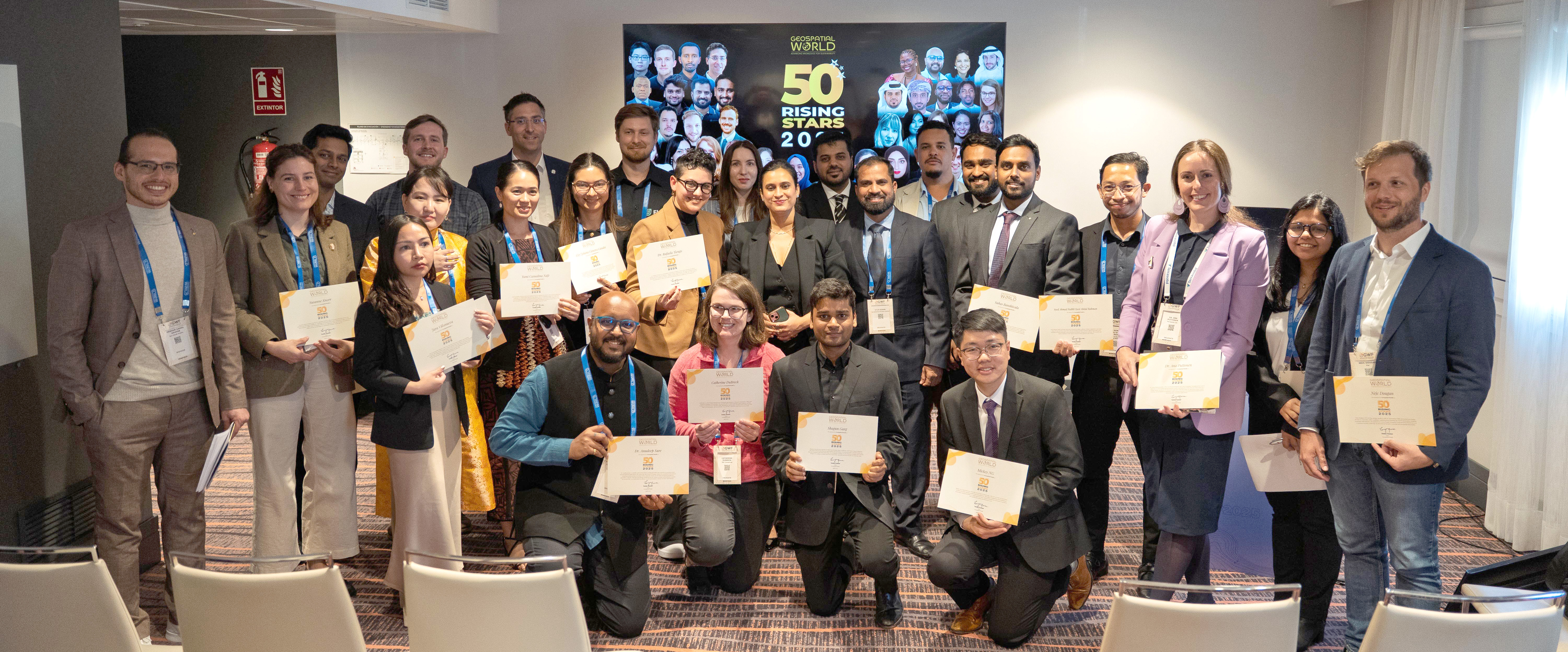
Shagun Garg, a second-year PhD student in the Department of Engineering at the University of Cambridge, has been recognised as a Geospatial World Rising Star 2025, joining an international cohort of young professionals who are shaping the future of geospatial science and technology.
I’ve always been fascinated by the way data from space can help us better understand problems here on Earth, as climate change increases the severity and frequency of floods and droughts, there’s an urgent need for smarter, more scalable monitoring approaches. I want my research to directly support decision-makers—from engineers to humanitarian responders—who are working to build more resilient communities.
Shagun Garg, second-year PhD student
Launched in 2021, the Geospatial World Rising Stars initiative honours individuals under the age of 40 who are using geospatial technology to tackle global challenges across society, the environment, and business. Only 250 professionals worldwide have been recognised since the award’s inception.
Shagun spoke at the Geospatial World Forum 2025, where the 2025 Rising Stars were formally celebrated. The forum brought together leaders from over 80 countries, including senior government officials, scientists, engineers, entrepreneurs, and innovators from global organisations such as ESA, NASA, ESRI, and United Nations.
“It is an honour to be recognised alongside such a dynamic group of individuals,” said Shagun. “This award is incredibly motivating—it’s recognition from the wider scientific and industry communities that the work we are doing matters. It gives me the confidence to think bigger and continue pushing for impact through research. I’m especially excited to represent Cambridge and bring our department’s geospatial research to a global stage.”
Supervised by Dr Sakthy Selvakumaran and Dr Edoardo Borgomeo, Shagun’s research sits at the intersection of Earth observation and water management, focusing on the mapping and monitoring of floods and droughts using satellite data. His work also explores how evidence-based, nature-based solutions can help reduce water-related disaster risk and build climate resilience.
“I’ve always been fascinated by the way data from space can help us better understand problems here on Earth,” Shagun explained. “As climate change increases the severity and frequency of floods and droughts, there’s an urgent need for smarter, more scalable monitoring approaches. I want my research to directly support decision-makers—from engineers to humanitarian responders—who are working to build more resilient communities.”
Shagun joined the Department as part of the EPSRC Centre for Doctoral Training in Future Infrastructure and Built Environment: Resilience in a Changing World (FIBE2 CDT) programme. He holds a background in civil engineering and remote sensing and has presented his research at major international conferences such as AGU, EGU, and InGARSS. Alongside academic work, he is passionate about public engagement and making geospatial science more accessible to practitioners and communities alike.
He says “I’ve been incredibly lucky to have amazing mentors throughout my academic journey who have shown me how our skills can be used to help others. I hope to continue that tradition.”
Read more about the 2025 Rising Stars
 Shagun Garg (front row 3rd from left) at the Geospatial World Forum
Shagun Garg (front row 3rd from left) at the Geospatial World Forum

